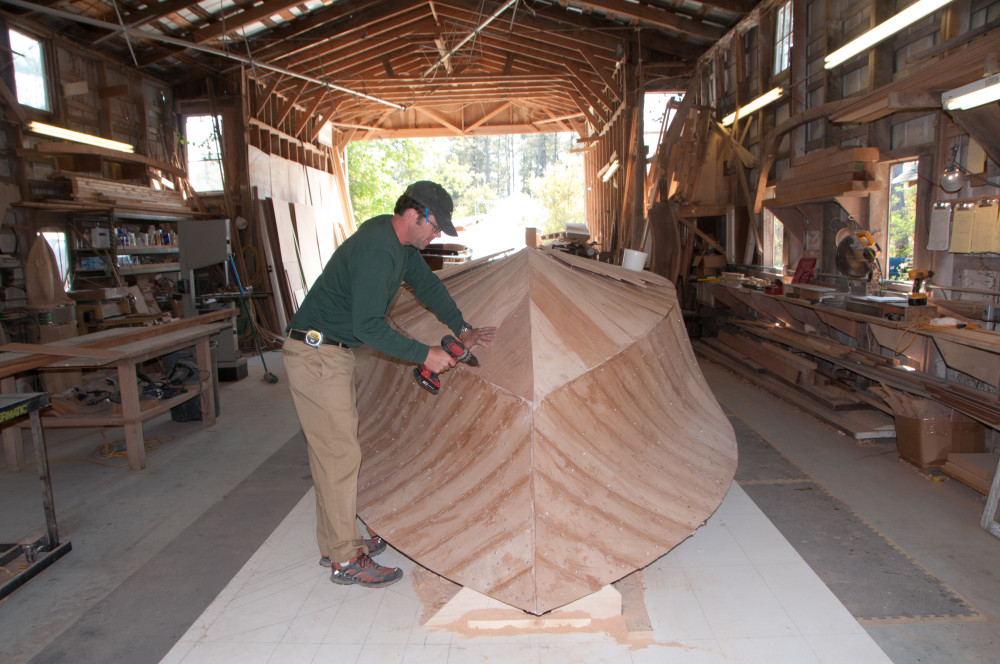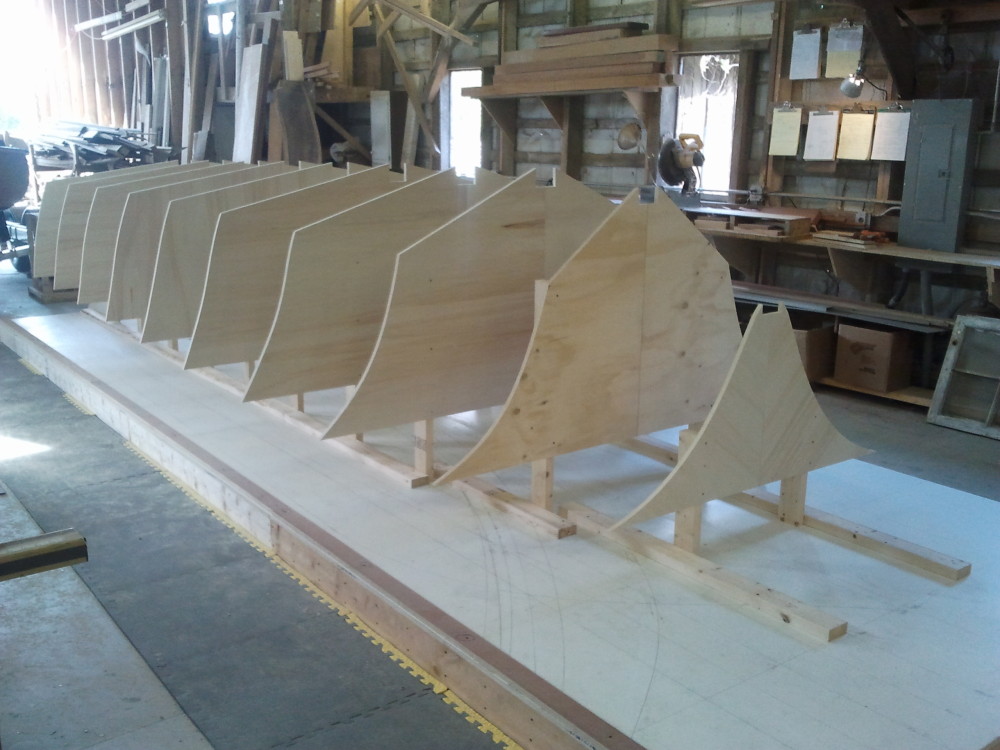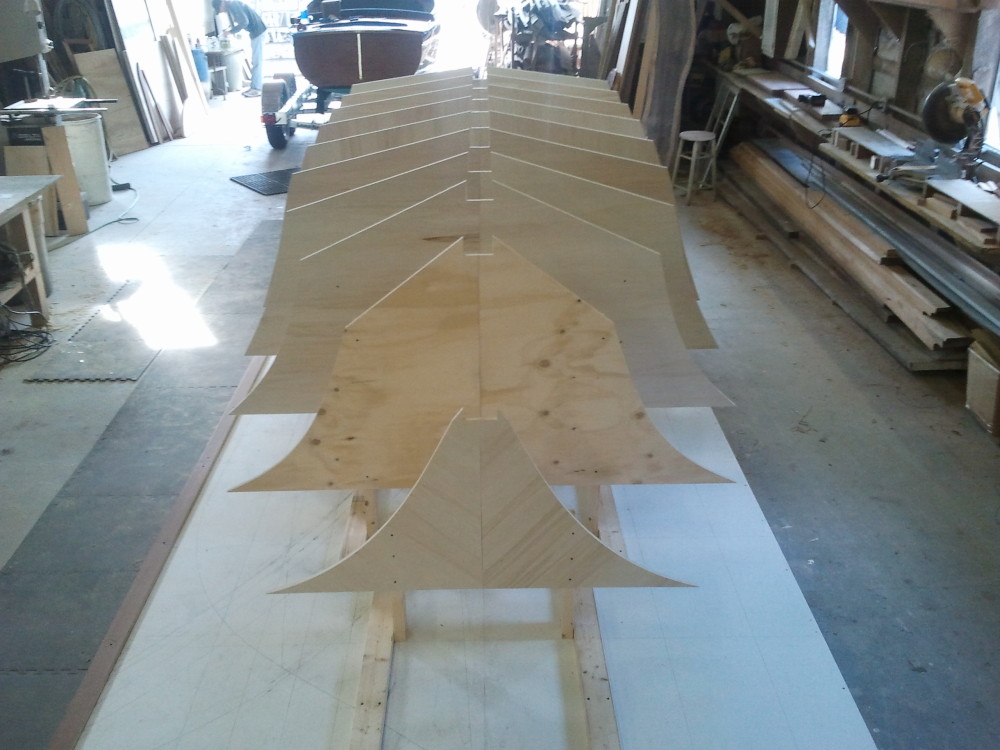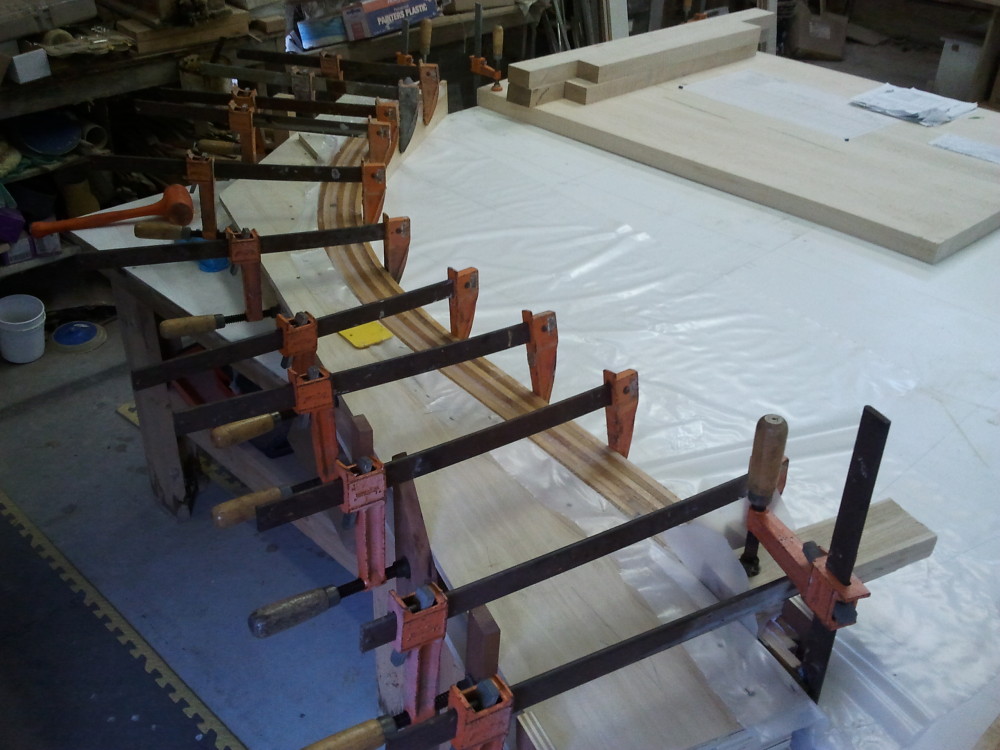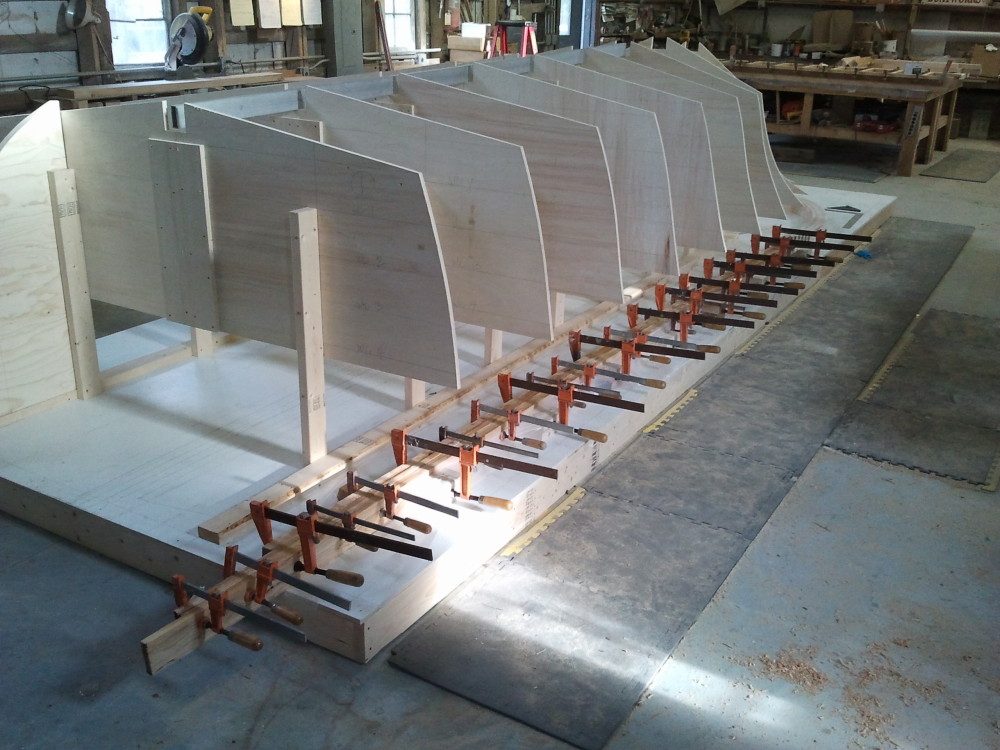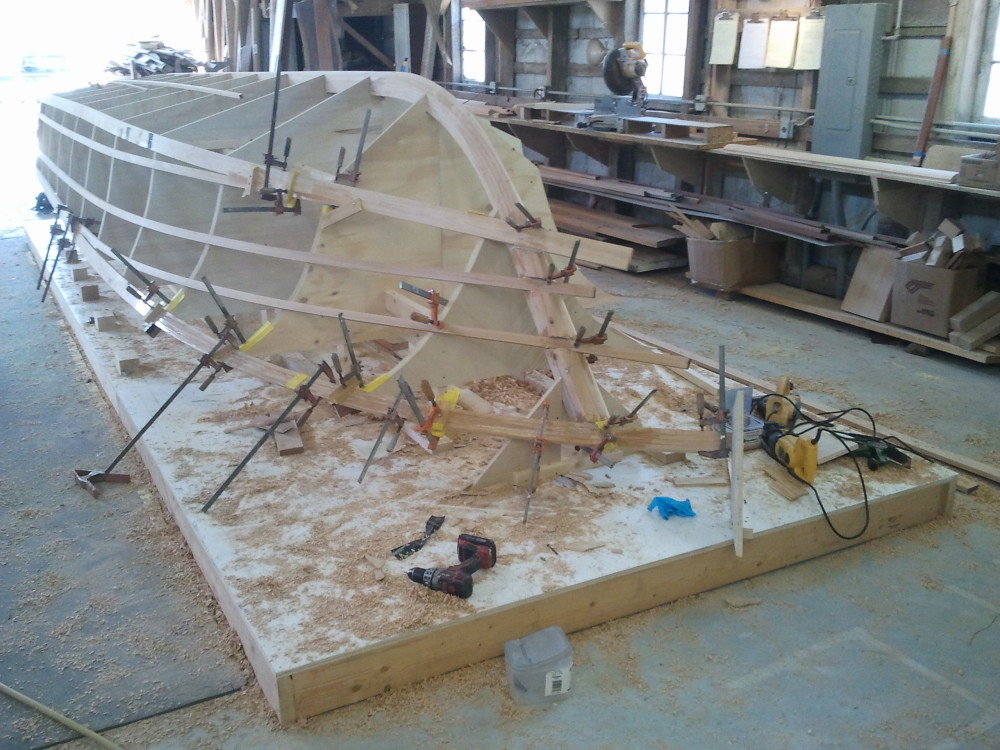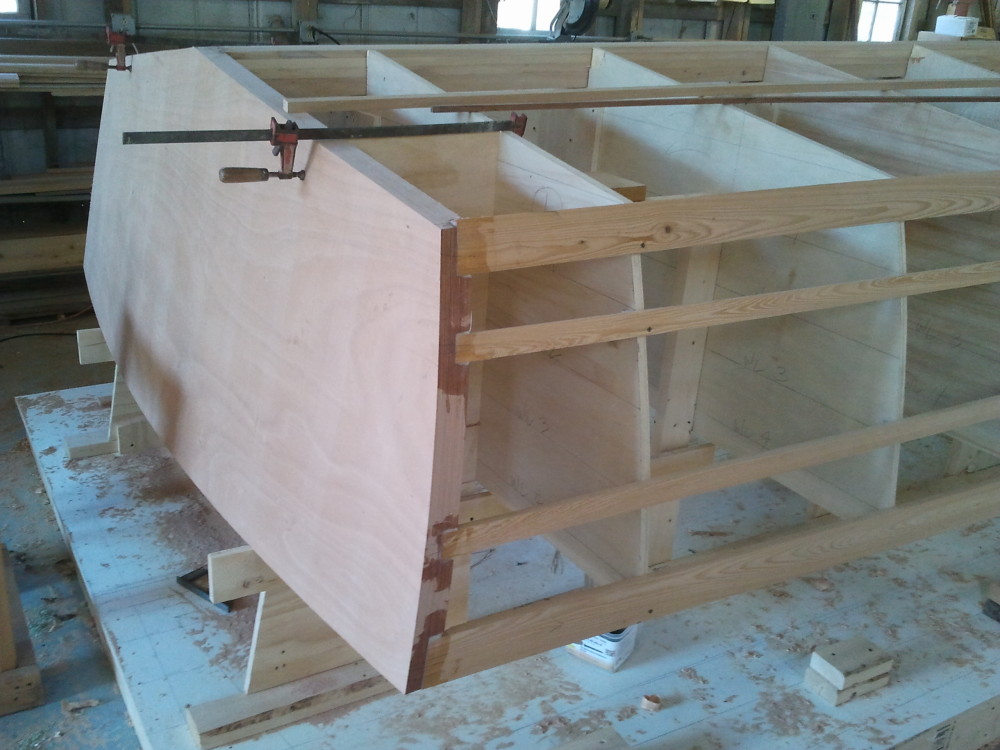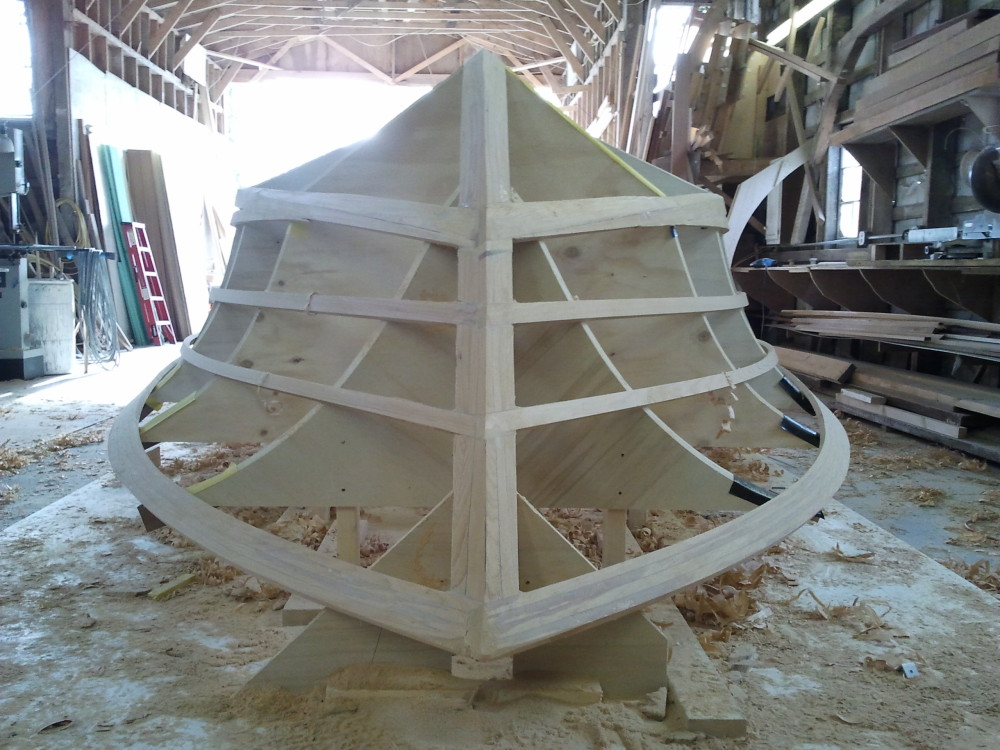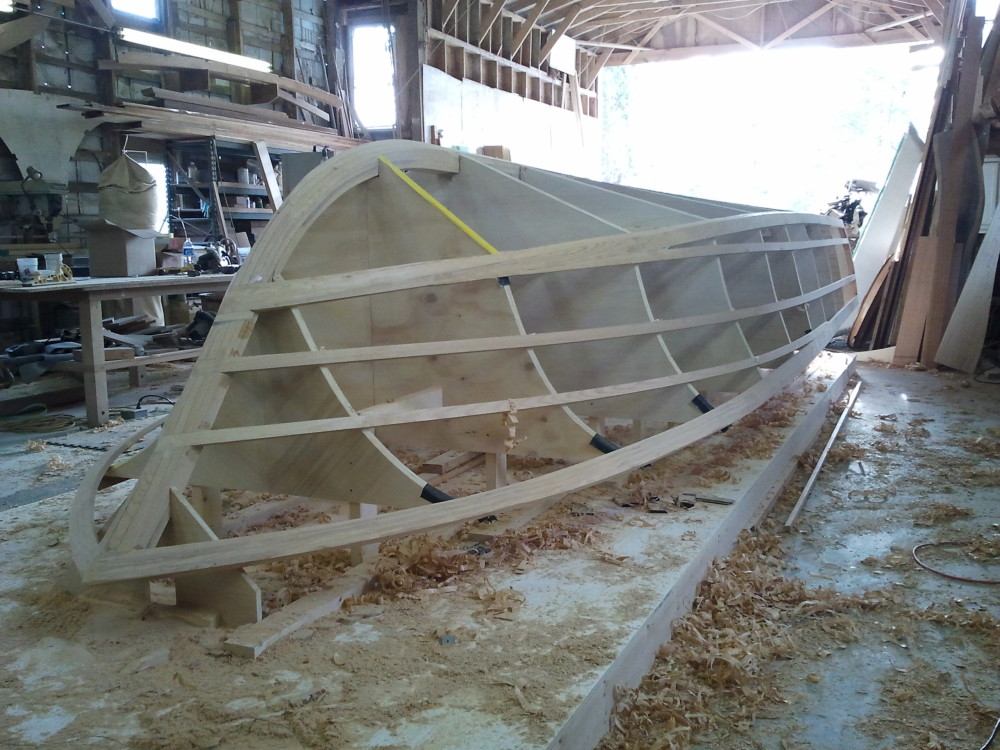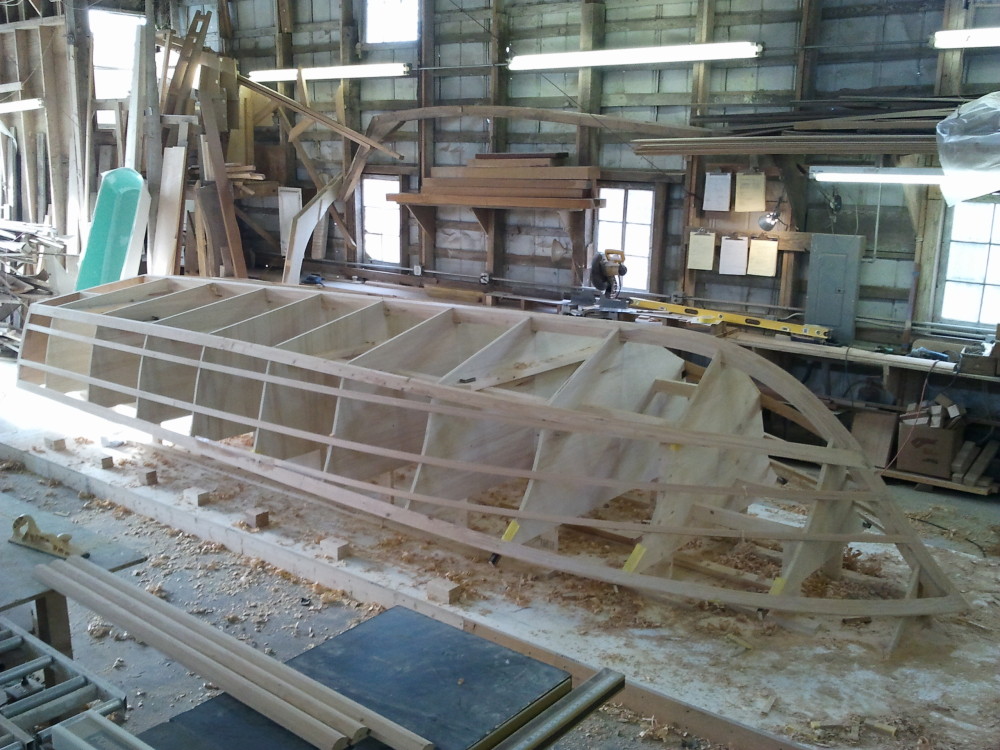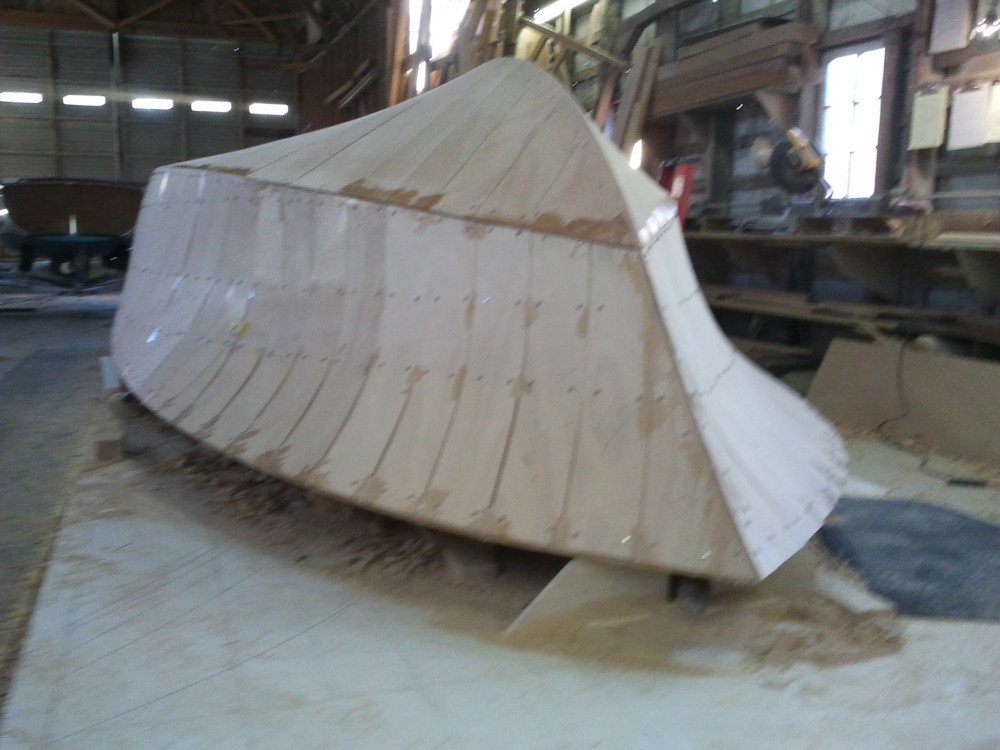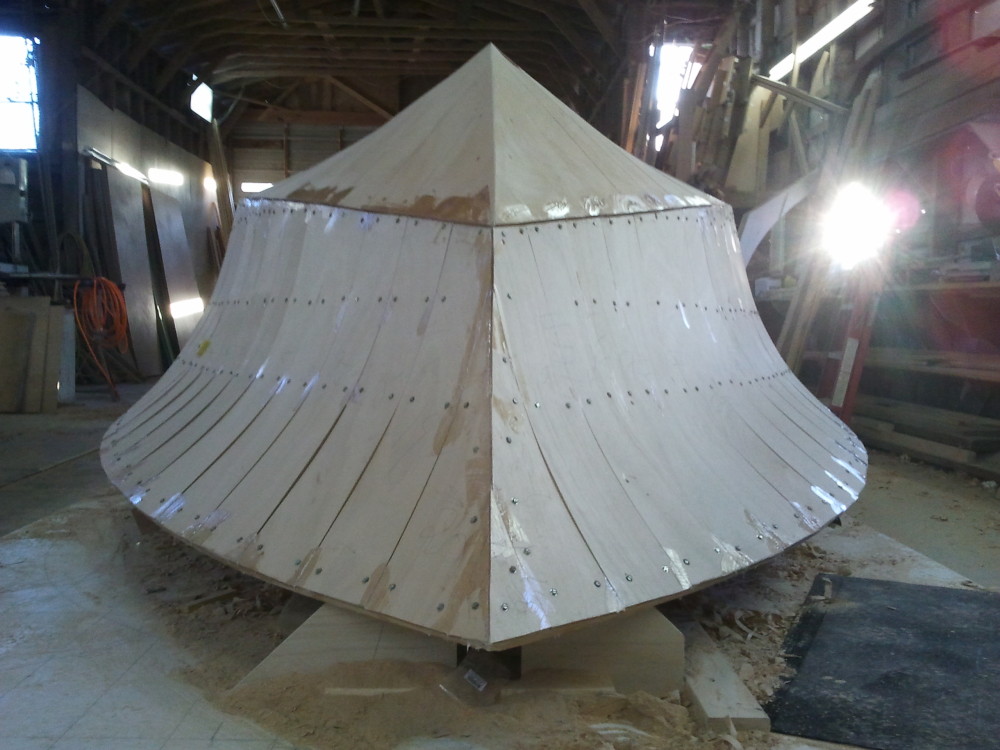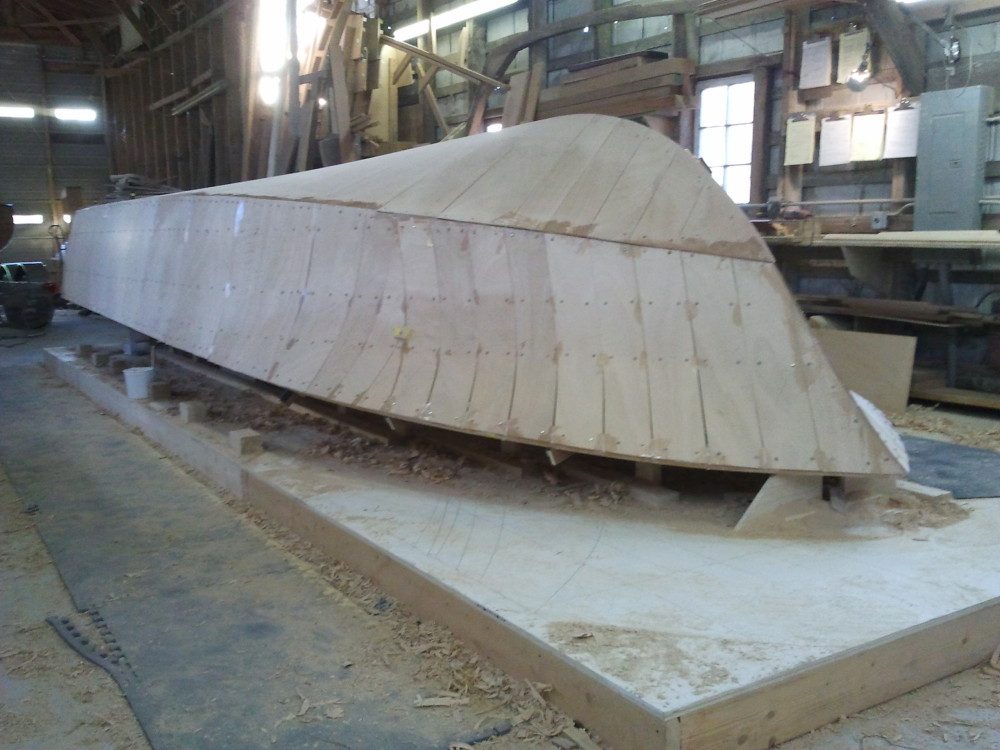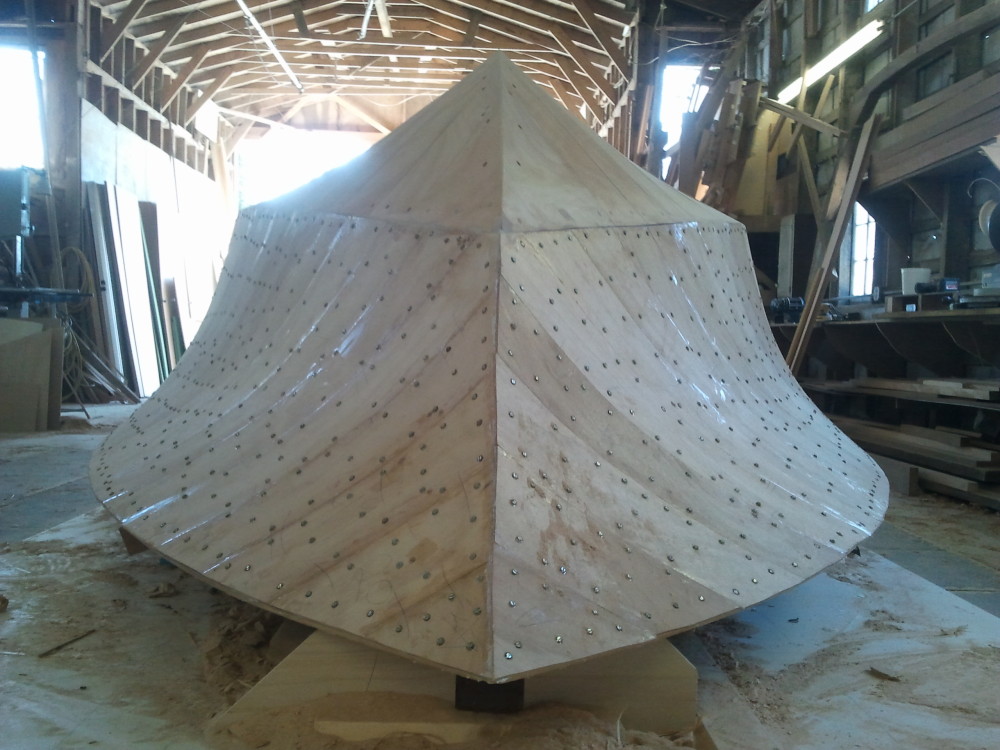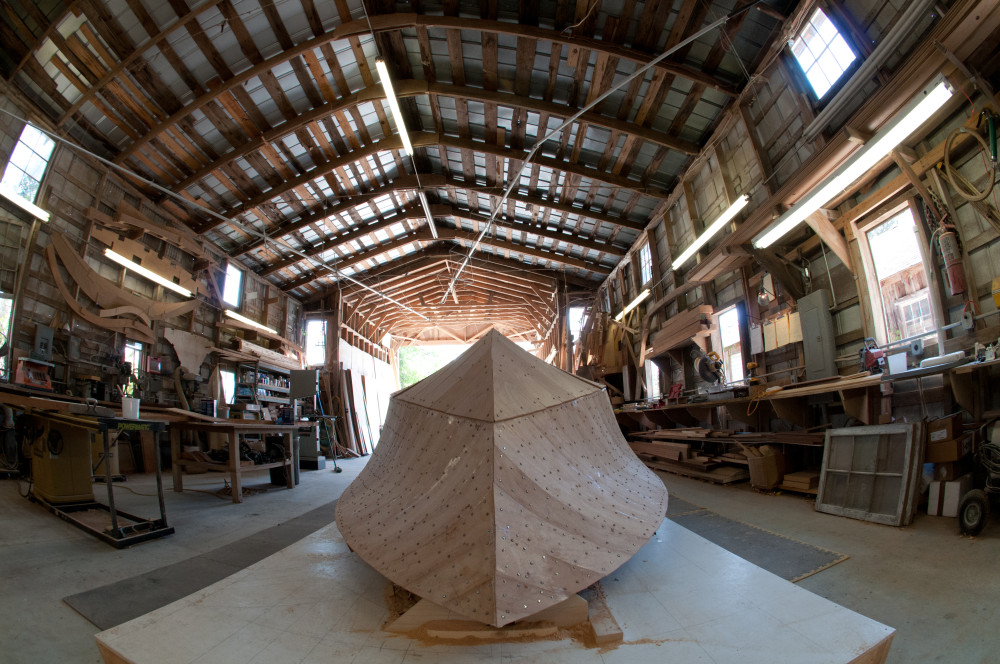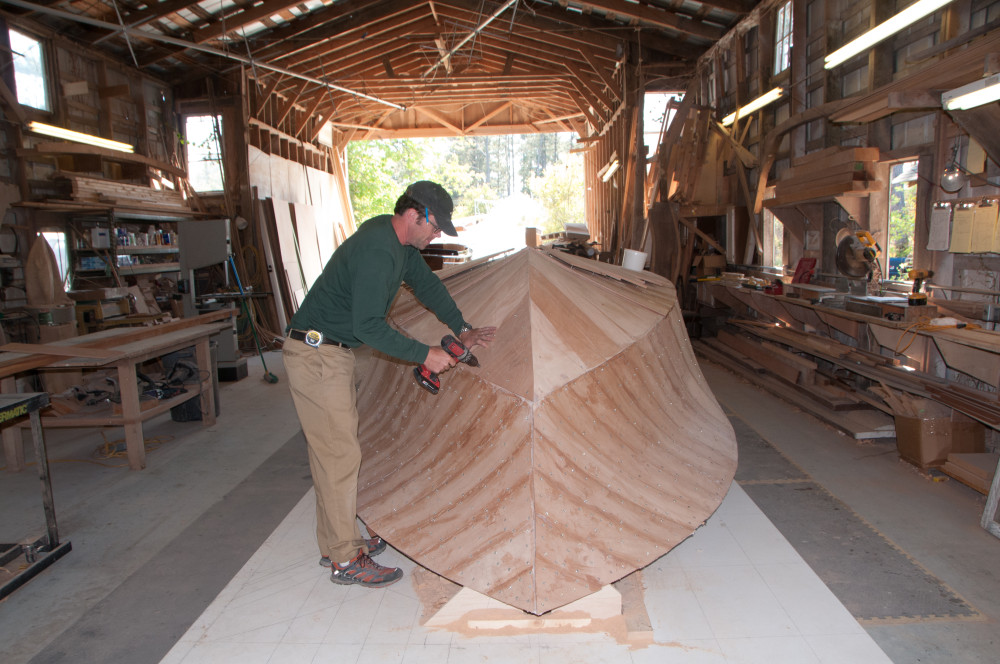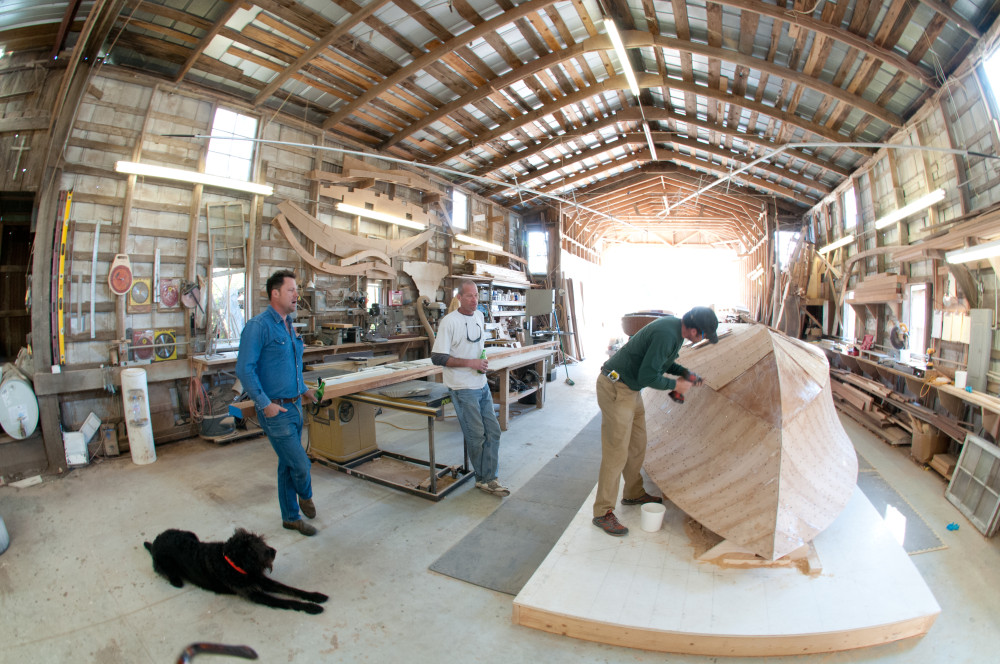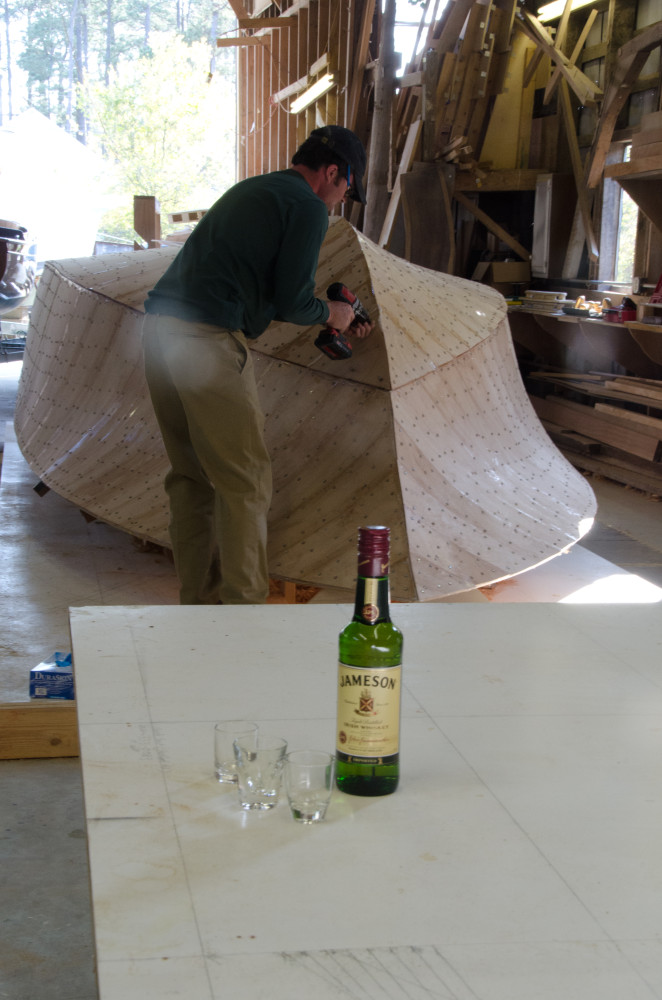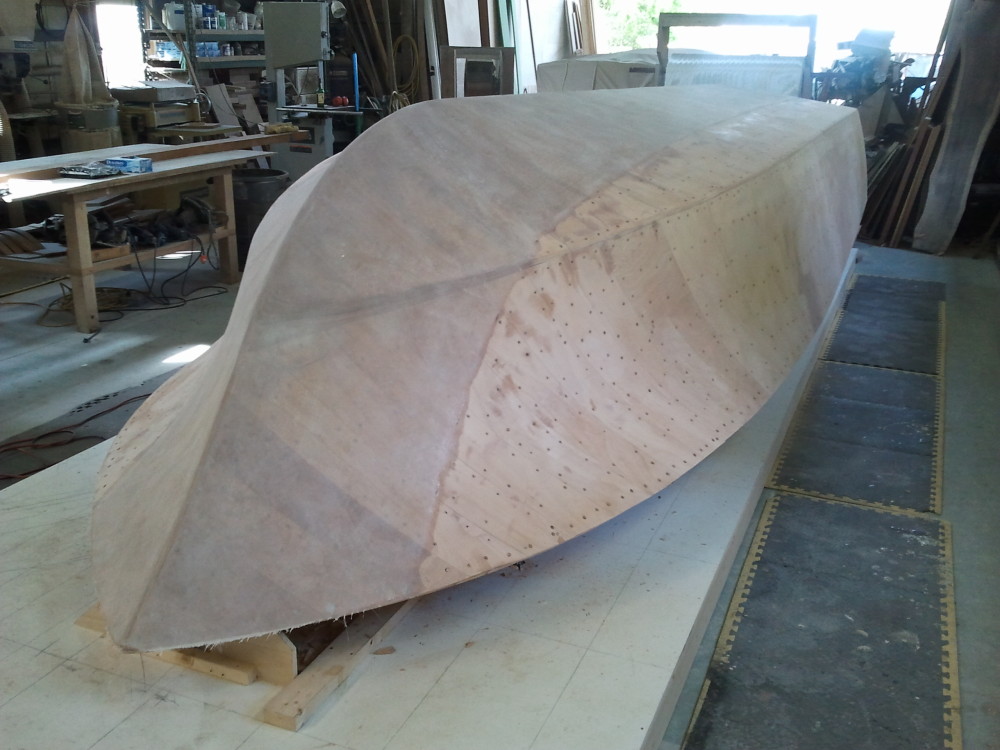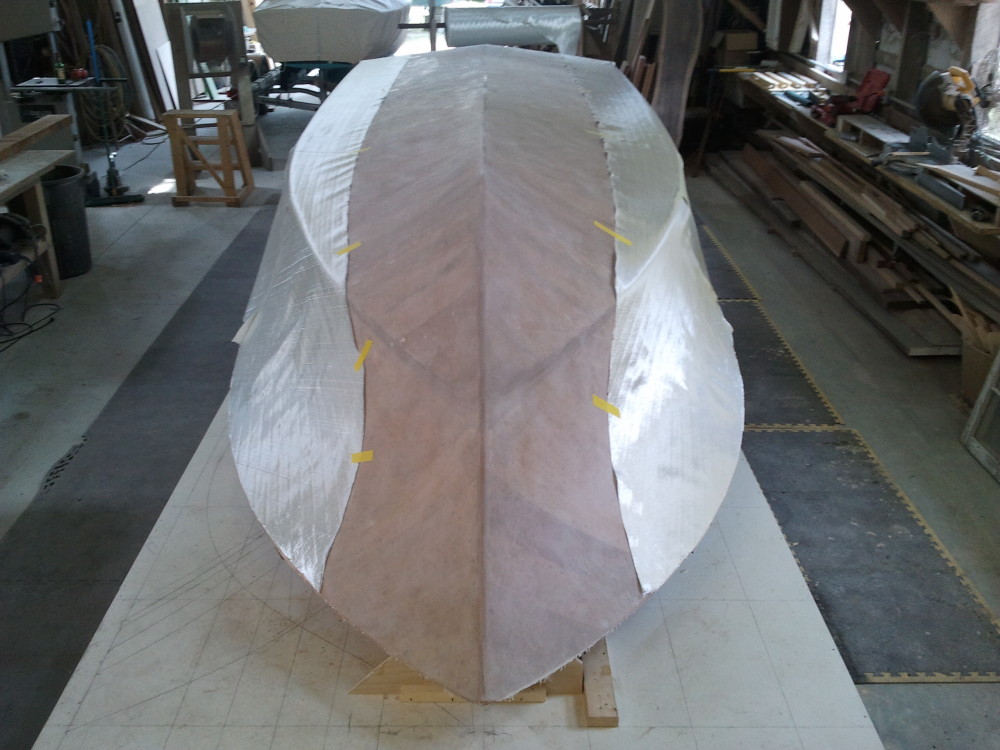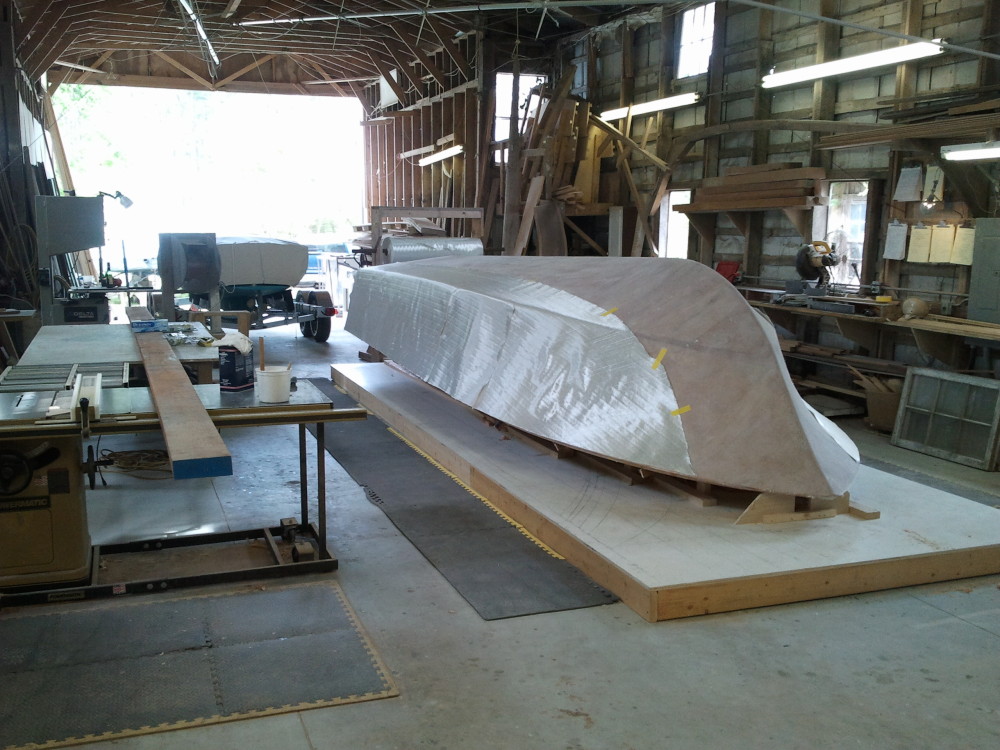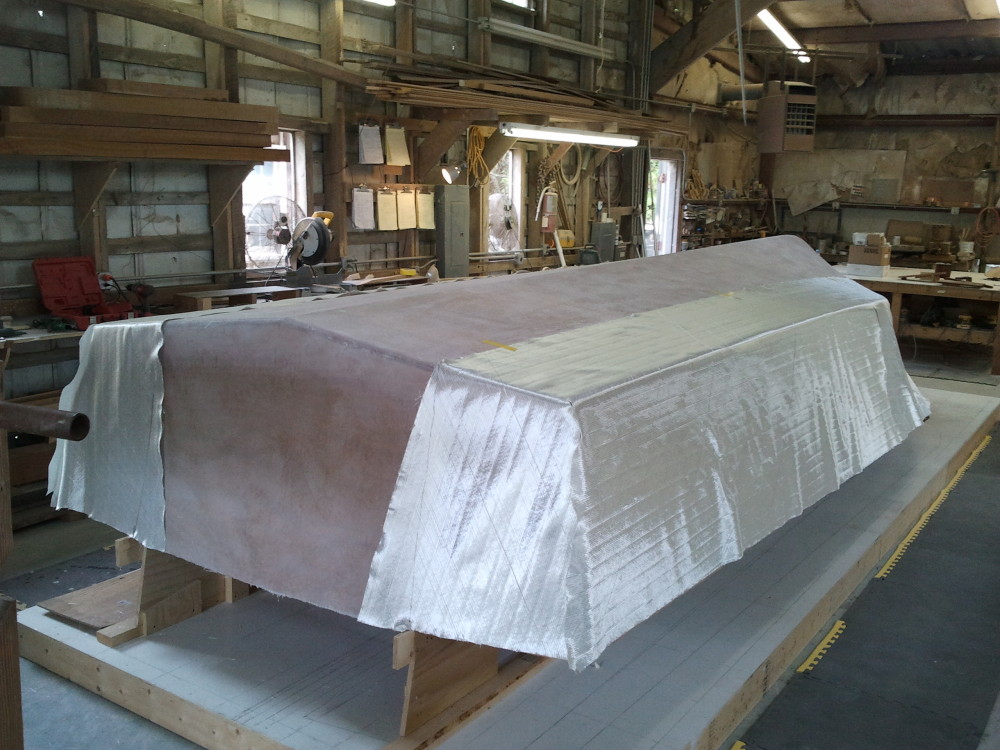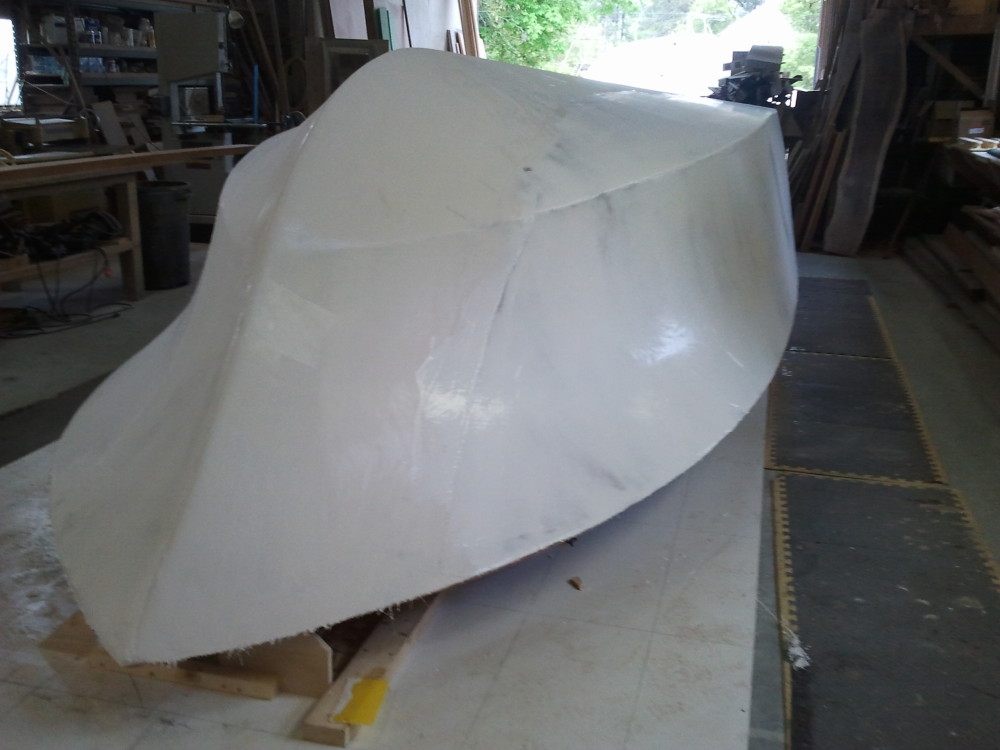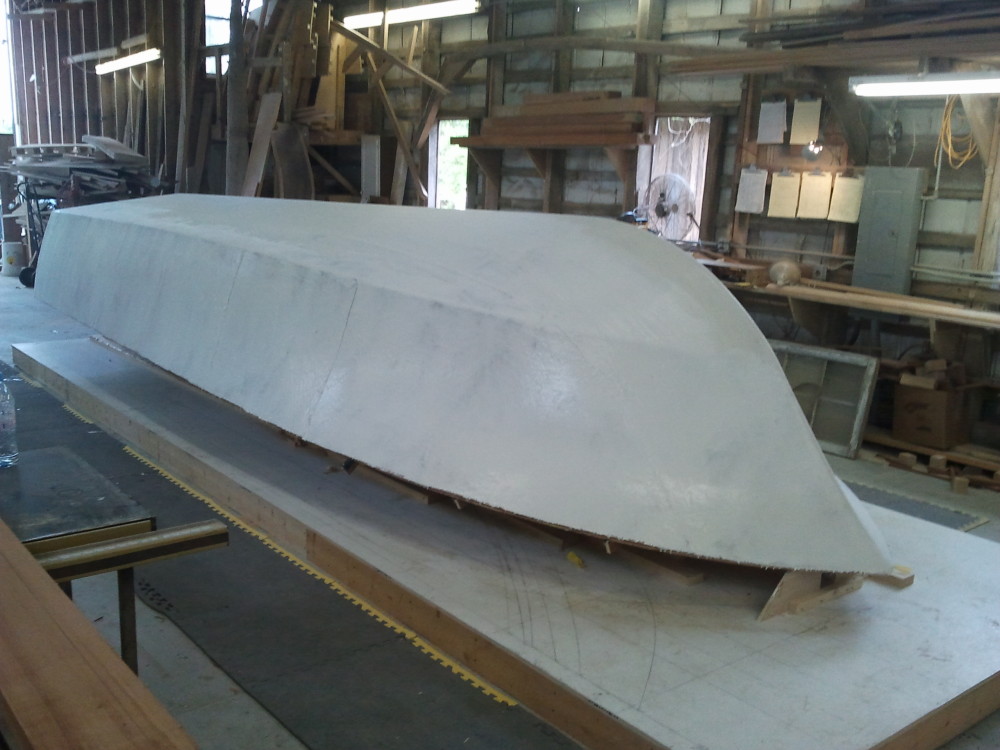About two years ago, I received a phone call from Andrew Hampson to discuss the prospects of building one of the tunnel skiffs that he had seen on my website. After getting to know his needs and requirements over the course of a half-dozen 30-minute phone conversations, we discovered that he needed a different boat. He wanted a boat that could also go well outside of Masonboro Inlet in the ocean safely carrying at least five adults and handle the adverse sea conditions. He also wanted to get up into the shoaly backwaters and grass flats to target drum, speckled trout, flounder, etc.
This is how it is in custom boat building. Sometimes what a customer wants evolves into a totally different boat once their needs are all hashed out. A particular design only comes about after personally getting to know a customer and what he or she wants out of this relationship that we’re entering. The precise compromise that is every boat can only be narrowed down after getting to know somebody. This is why I love my job.
I then designed a 22′ center console just for Andrew’s needs.
The 22′ had been on my mind before this. After taking my 28′ center console on the road to different shows, it seemed there were a lot of people who were interested in a bare-bones center console fishing boat with the classic Carolina styling of the 28′, just scaled down and made less expensive with less horsepower, less teak and less bells and whistles. I have tried to answer those people’s wishes as well as Andrew’s with this new 22′ design, which will be comparable in price to some 22′ production boats.
The running bottom of the 22′ is a design that falls in between the 17.5′ flats skiff and the 28′ center console offshore model. It begins with a moderate 7-degree deadrise at the transom and progress to around 35-degrees at the entry. This progressive deadrise bottom has been proven in both large and small boats to be a very efficient and seaworthy running bottom, while maintaining a stable fishing platform while not on a plane. The combination of this bottom with the aggressive sprayrail translates into a drier ride that planes easily and requires less fuel than many of the deep-V deadrise boats on the market. Those deep-V boats that have flooded the market take three times as long to get on a plane, use far more fuel when running, and are not near as stable or comfortable while fishing.
Here are some photographs taken at Harrison Boatworks’ shop on Roanoke Island of the process of building this 22′, from the design to the production of the jig to the assembly of the longitudinals (i.e., stem and keel, battens, chine log and sheer clamp) and connection the transom and beyond. There are pictures in here of the “whiskey plank,” which is the last and usually the smallest plank affixed to the hull. There is usually but not always a toast given by the builder and a few drinks taken by the witnesses that are present. The toast is one that wishes the new owner good luck and a long life for his boat.
I will be posting more photos as I progress.
Click on any image to start the slide show.
